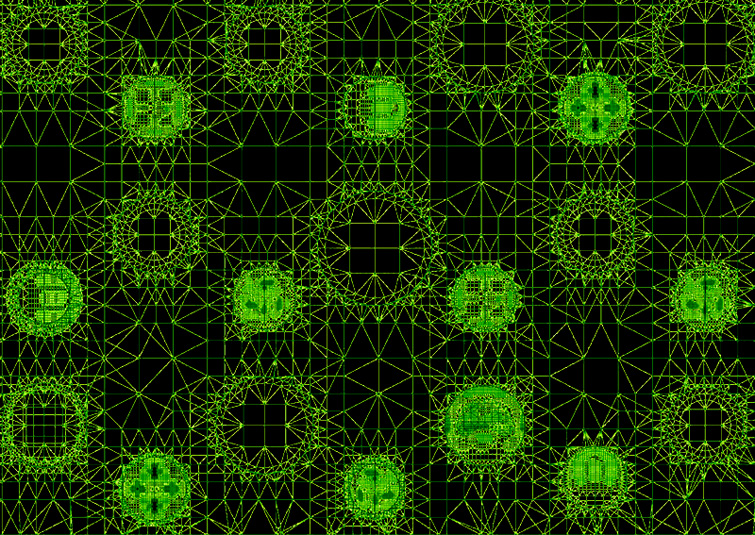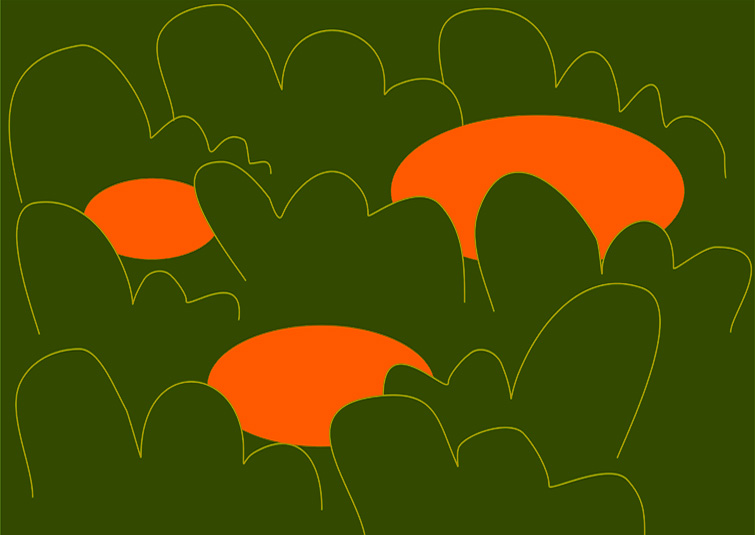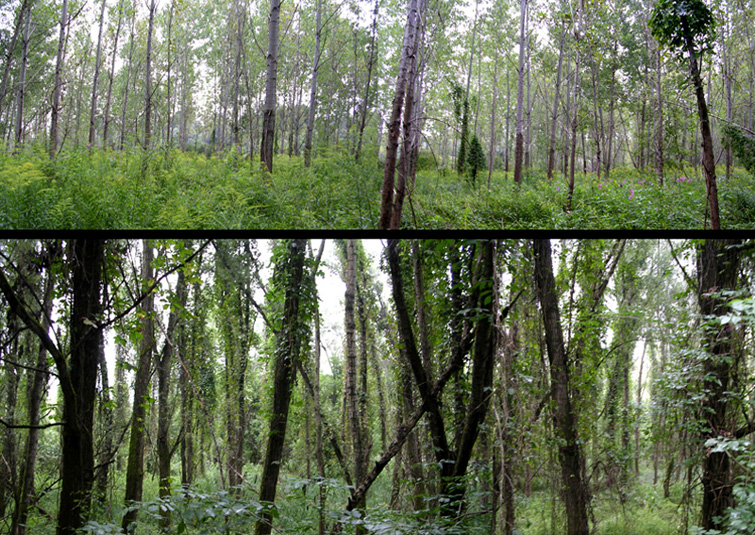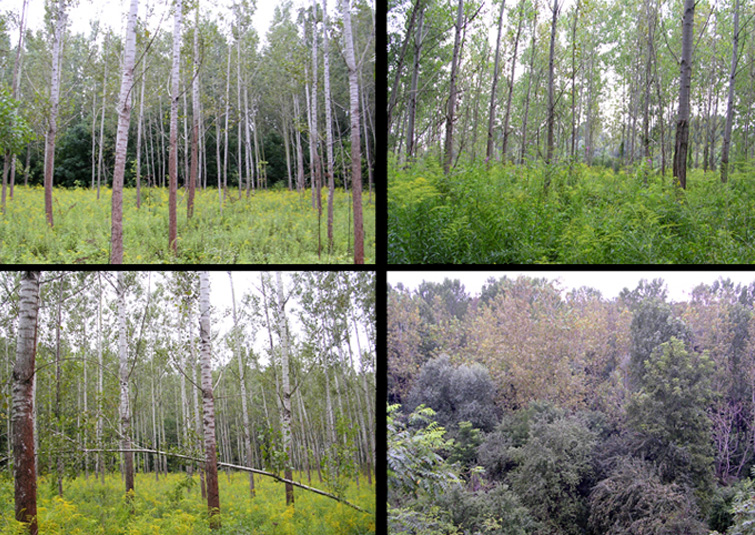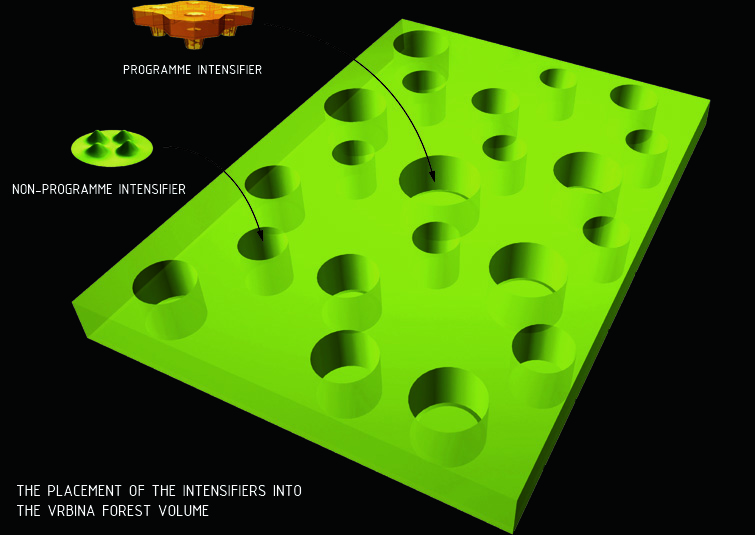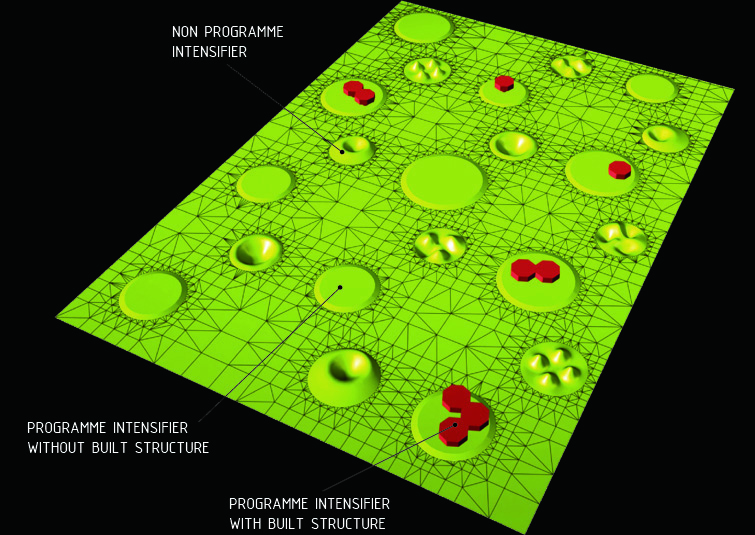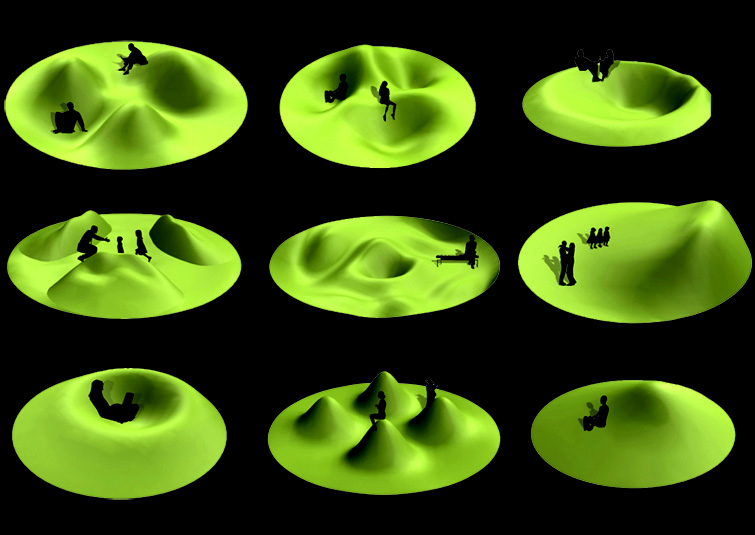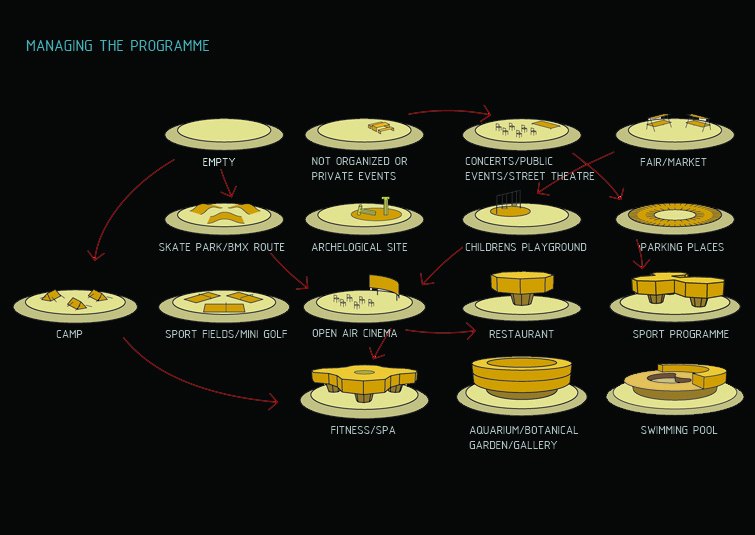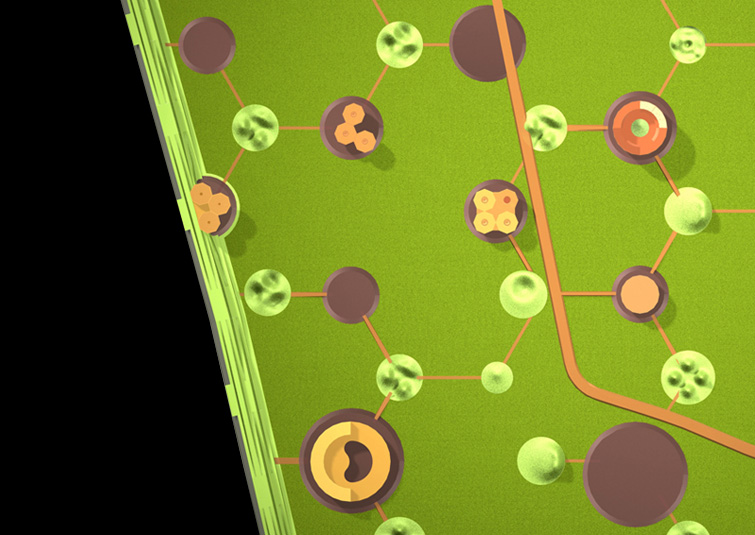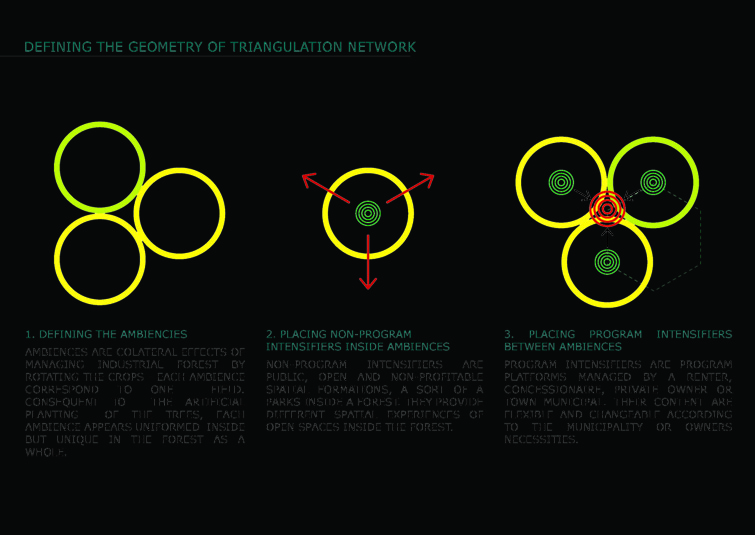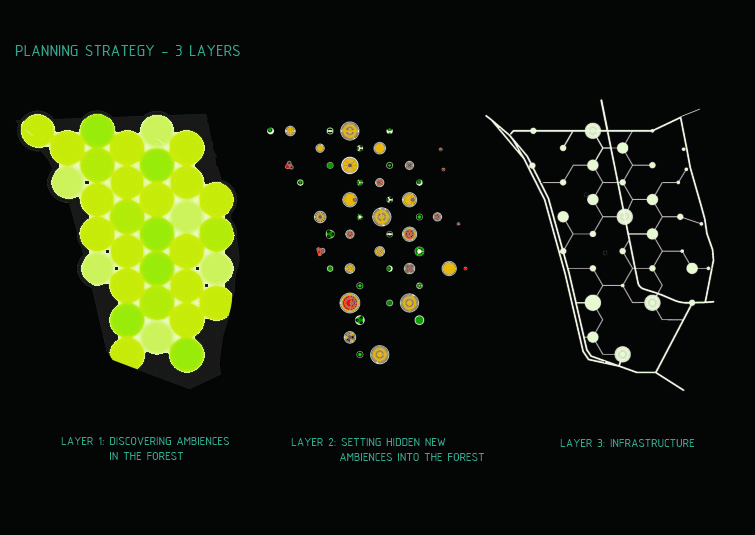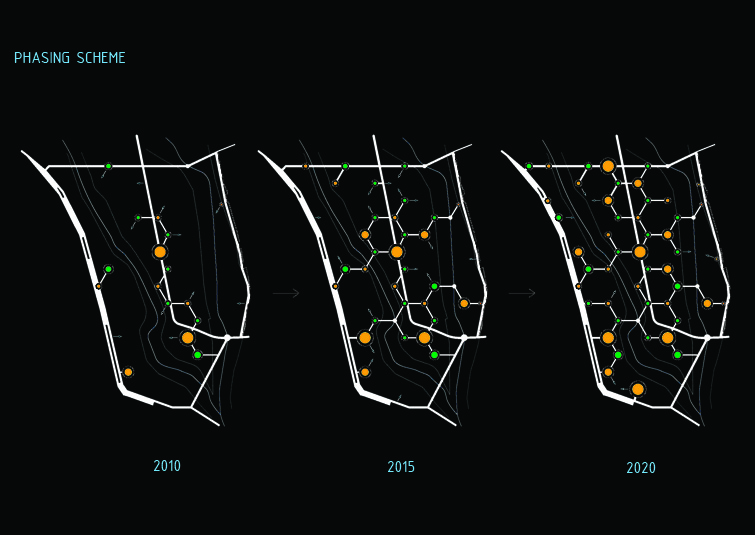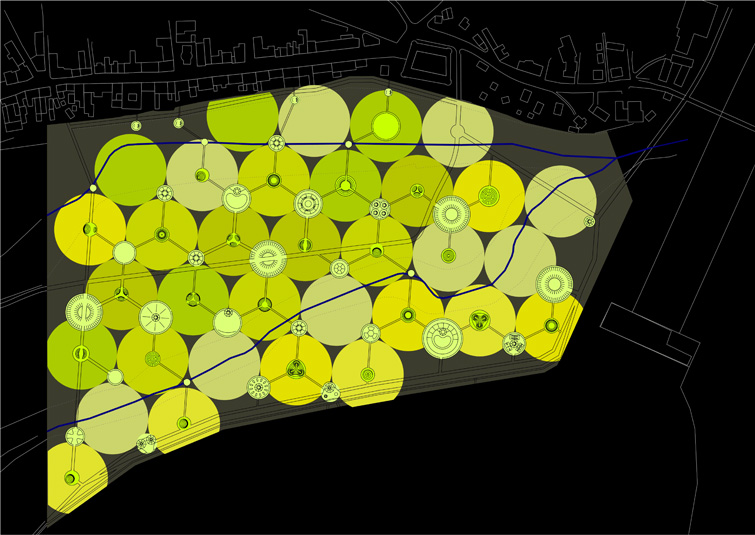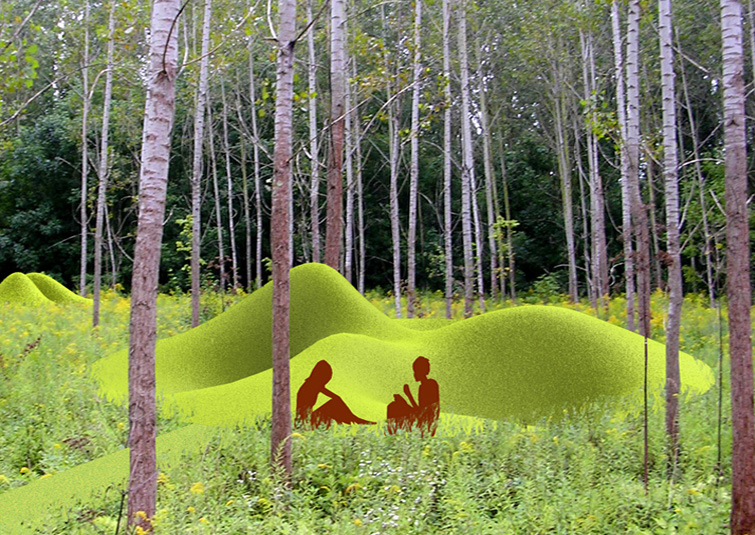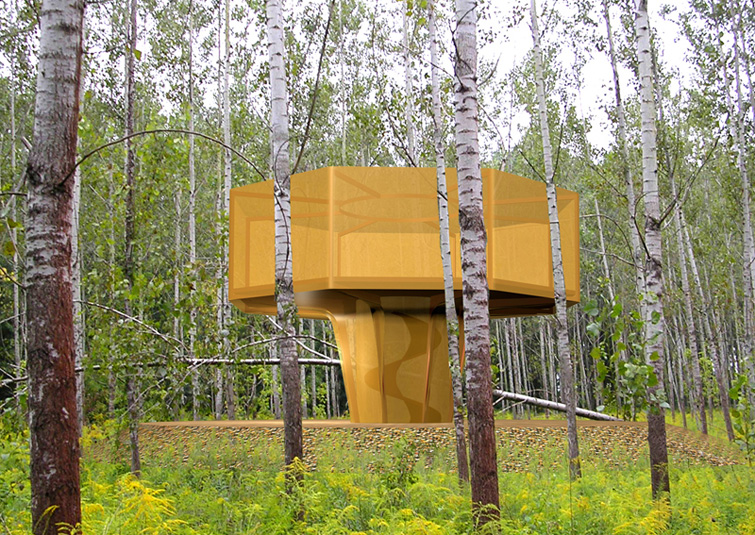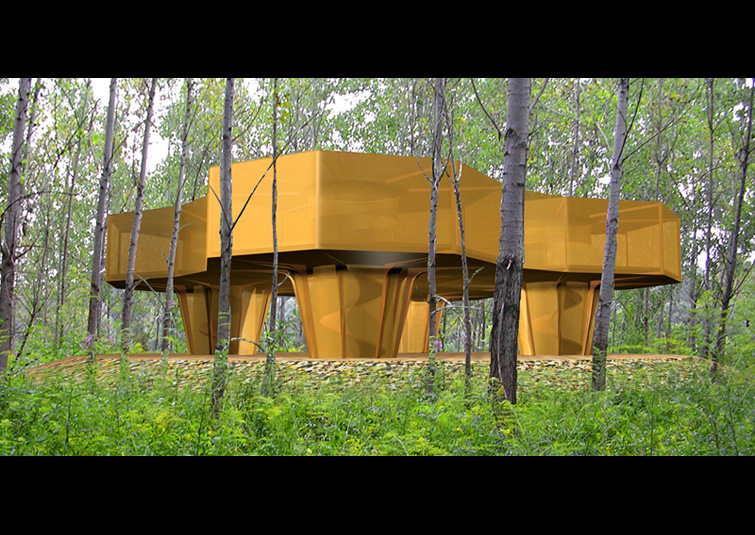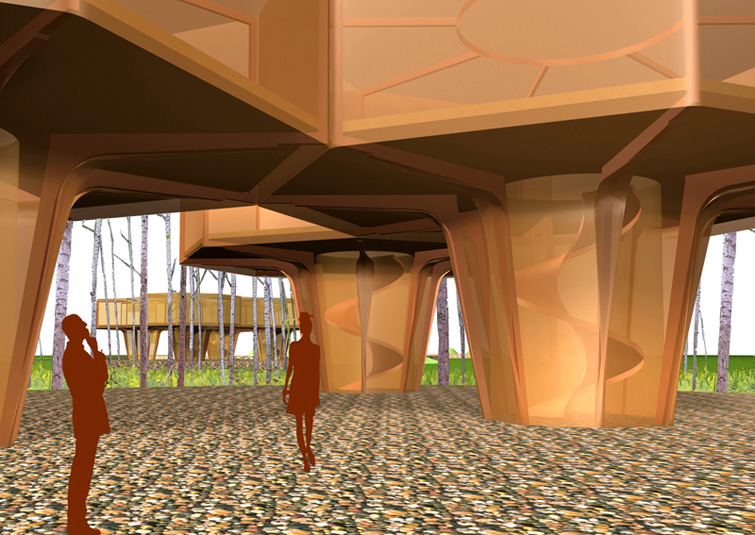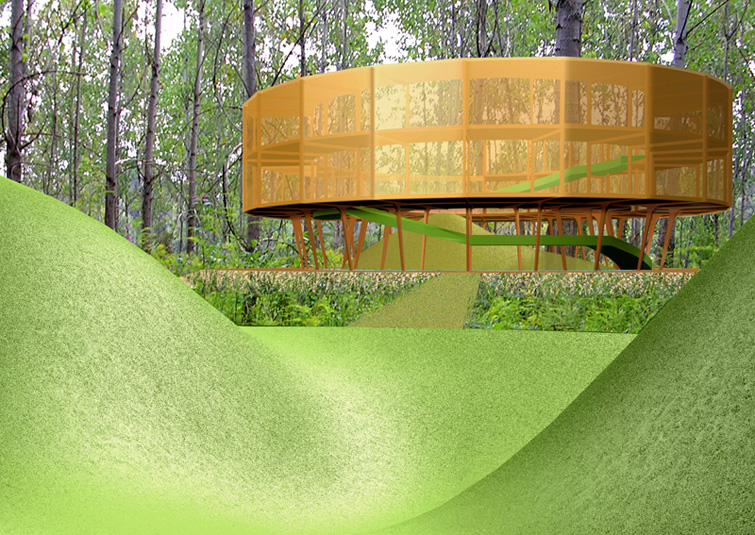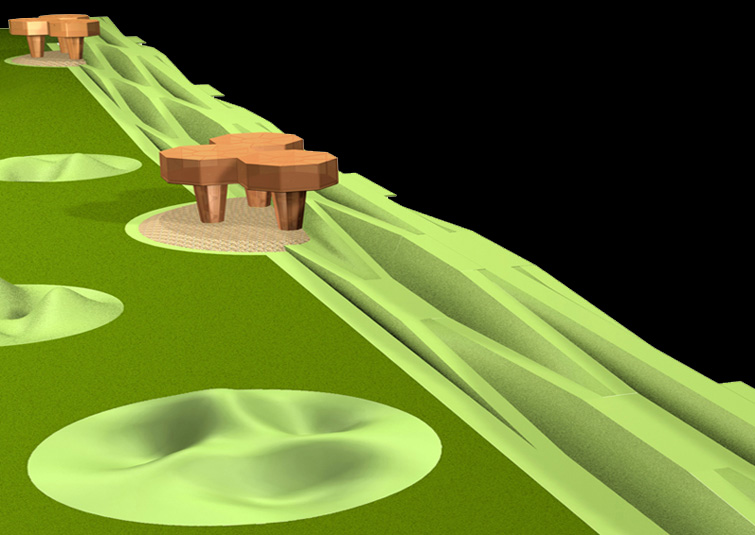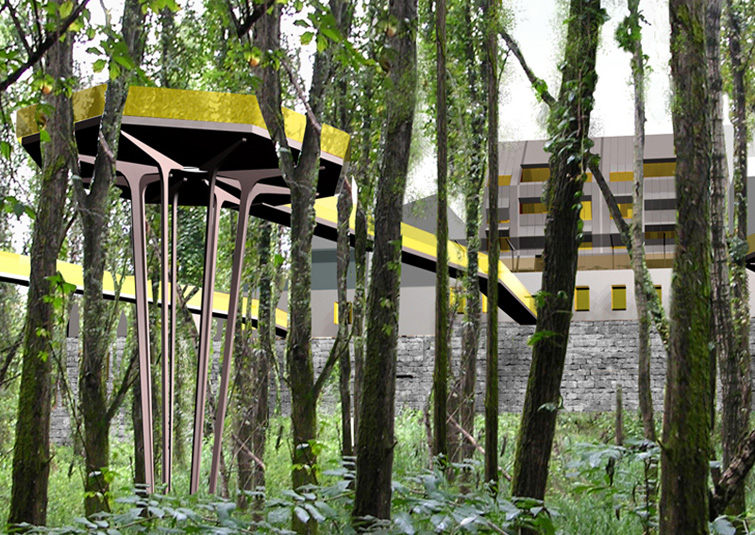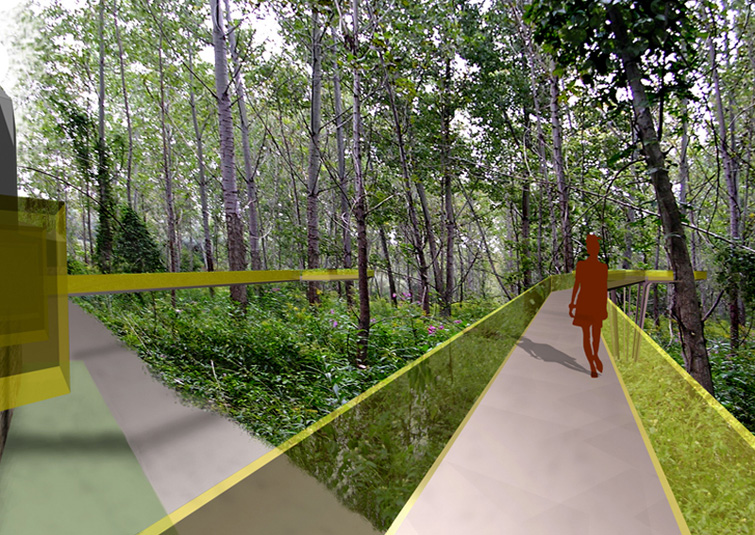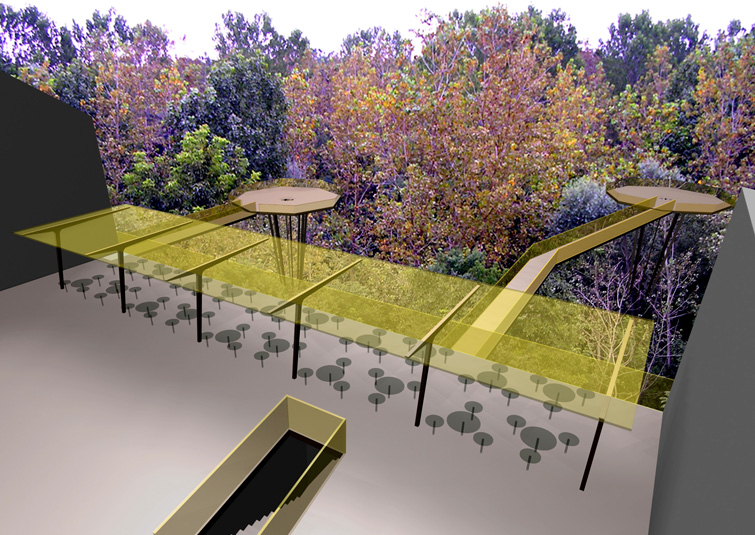

| PROJECT: | GENERIC FOREST - EUROPAN 8 |
| SOURCE: | COMPETITION PROJECT |
| CLIENT: | CITY OF BREŽICE |
| SITE: | BREŽICE, SLOVENIA |
| PROGRAM: | PUBLIC, RECREATIONAL, SPORTS, ENTERTAINMENT |
| AUTHORS: | BREDA BIZJAK, TOMAŽ KRIŠTOF |
| STATICS: | IGOR LIPANJE - ELEA IC |
| LANDSCAPE ARCHITECTURE CONSULTANT: | DR. ALEÅ BIZJAK |
| DATE: | september 2005 |
Fundamental approach to the project is an intention to transform the Vrbina ground into the active surface, as well as to provide a bridge between the city and the surrounding landscape. The planning process aims for integration with specific bio-physical and bio-climatical local characteristics, foreseeing the valorisation and utilisation of the potential, using economic technologies and local resources.
The plan is articulated in Three strategic phases based on the characteristics of open ambiences as main providers of a new identity of Vrbina and Brežice.
The First is the recognition and definition of existing ambiences on the project area of the Vrbina landscape. Due to the amazing potential noticed in forest ambiences, we took a stand to leave the ambiencies exactly as they are. The Vrbina ecosystem has already generating its own way of renaturalizing itself.
The Second is the establishment of a policentric network of intensified fields by punctual implantation into the volumes of forest ambiences.
Intensifiers are program (P) and non-program (NP) implants, which present spatial interventions on the site providing different spatial experiences and recreational, leisure and cultural activities. The fields have a potential to become the main initiators of the people flow in Vrbina and Brežice.
The Third phase is the establishment of a triangulation network of communication, which enables the effective interconnection between fields with the least possible number of built communications. Pre-defined and evenly distributed intensified fields ensure less aggressive spatial interventions in the delicate forest organism. Foremost, it enables controllable spreading and phased realization of programs and easier adaptation to the surrounding environment.
The strategy of Three phases enables the possibility of a phased realization of the project due to the individual positioning of independent fields. The placement of a few starting intensifiers by the municipality and initiating visitor`s and resident`s interest should also stimulate the market to rethink about the Vrbina forest and above all about Brežice, as a new possibility of investing in open spaces.
The organic mounds arise as a result of the natural cycle, by a way of folding of sedimentary strata. They are fomed as postproducts of program activities on the surface.
Vrbina attracts with its possibility of different experience of open spaces.
Our movement and perception are gently guided, without strict hierarchy among fields of potential, the sights are opening sequentially, we comprehend and discover the space gradually. Thus structured the open space is experienced in different spatial sequences, in harmony with specifics of surrounding topography.
Instead of the precisely planned landscape design, we offer the masterplan, that is more like an operational manual with suggested program directives, a sort of a guide through spatial situations and ideas about the space.
Our intention was to intensify the landscape, one of those that is waiting to be rediscovered once again. The intensified fields work in a sinergetic way, they define a territorial and landscape re-systemisation where the relationship between nature and the anthropic system, as well as their integration and mutual interaction, are the central knot of a single planning strategy.
The project proposal for the city edge and CPB11 building shares a similar viewpoint as for Vrbina. The main idea is to restore the integration of the built structure with the open space, thus providing the fluid movement through the ground floor plan, starting from the CPB street into the city edge-cortyard through the uderground passage and the city edge-rooms to the city edge-terraces among treetops, enabling views towards the city wall and experiences of different micro-climate. The staircases lead from the terraces into the deep green of Vrbina.
Having in mind technically complex and demanding dyke structure, (and also) the possibility of non realization of the accumulative lake, the project proposes independent planning of the Vrbina area and eventually "leaning" of the program fields on to the dyke. The dyke itself is designed as a complex of gradually descending slopes connecting Vrbina to the raised lake level. As such, the dyke becomes a variety of a city edge, connecting and dividing different levels at the same time.
Starting from the hypothesis that the end purpose of architecture is not only to build but also to define environments where humans live and where activities can be organized, our project is based as much on action as on omission of the action.
